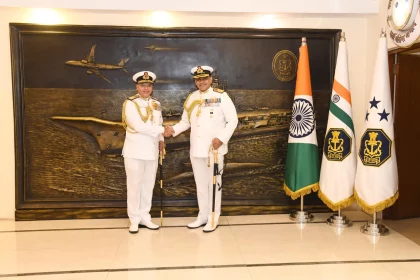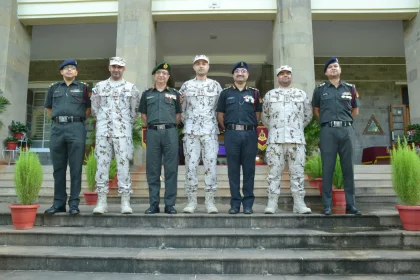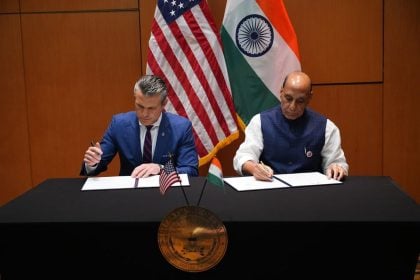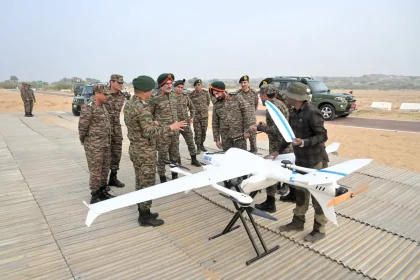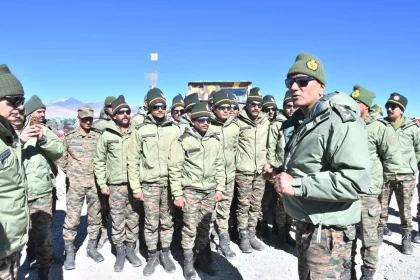Vice Admiral Sanjay Bhalla Assumes Command of Eastern Naval Command at Visakhapatnam
As the new FOC-in-C of the Eastern Naval Command, Vice Admiral Bhalla will lead one of the Indian Navy’s most…
UAE Army Medical Delegation Visits Armed Forces Center for Computational Medicine, AFMC Pune
The visit of the UAE medical delegation to AFMC Pune reflects the growing defence-medical collaboration between India and the UAE,…
India and US Sign 10-Year Defence Framework Pact to Bolster Indo-Pacific Security
The agreement signifies a robust commitment to elevating defence cooperation, potentially leading to increased joint production, technology transfers, and military…
Sapta Shakti Command Conducts Integrated Fire and Manoeuvre Exercise ‘Sentinel Strike’ in Thar Desert
The successful conduct of Exercise Sentinel Strike reaffirms the Indian Army’s preparedness, technological advancement, and joint operational excellence to safeguard…
India to Strengthen Air Combat Capabilities with New Meteor Missile Acquisition for Rafale Fleet
IAF Set to Acquire ₹1,500 Crore Worth of Meteor Missiles for Rafale Fleet; DRDO’s Astra Mk-II to Complement Indigenous BVR…
Lt Gen Pratik Sharma Visits Forward Posts in Tangtse Sector, Reviews Operational Preparedness
Lt Gen Pratik Sharma Commends Troops for High Readiness and Professionalism in Harsh Ladakh Conditions.

